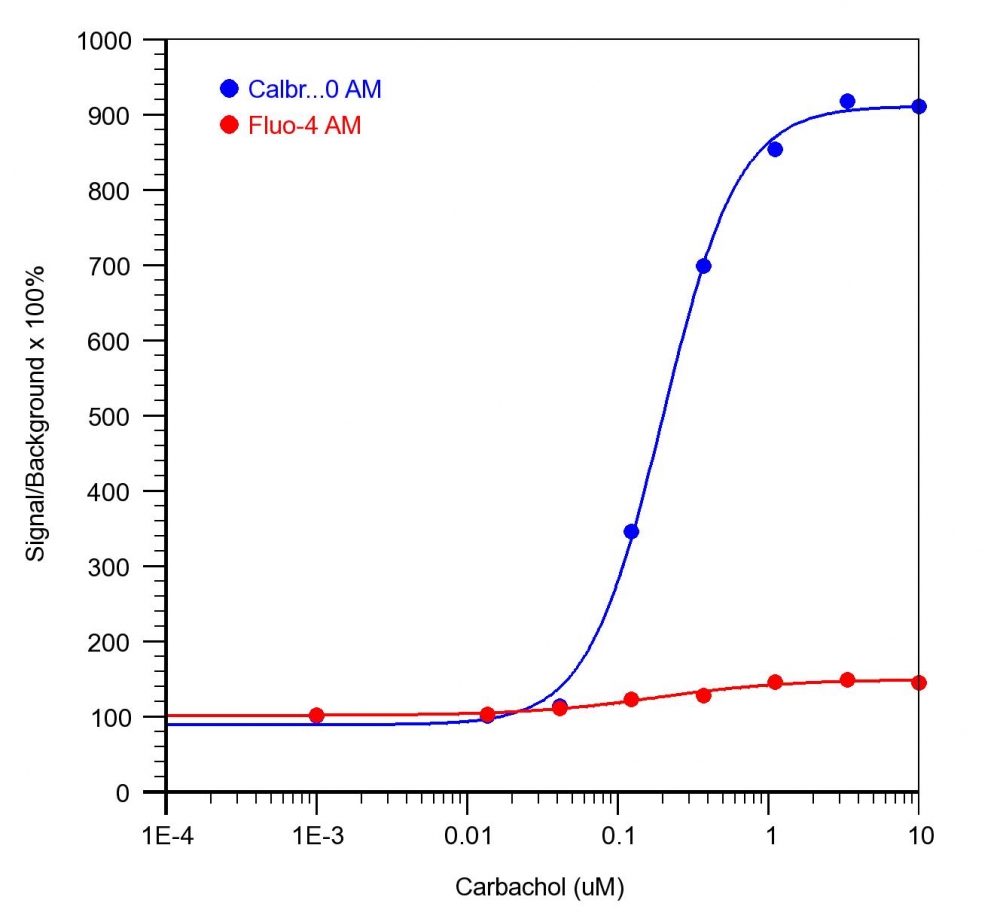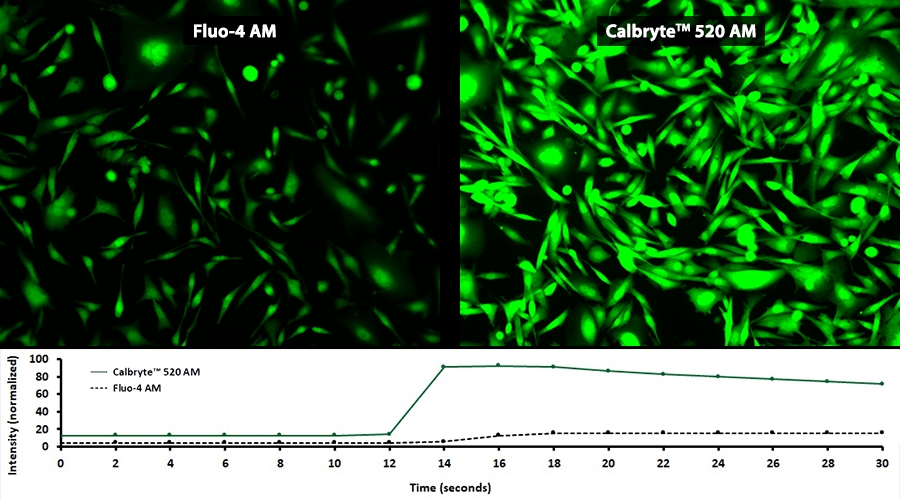Calbryte™ 520 AM
Catalogue Number: 20653-AAT
| Manufacturer: | AAT Bioquest |
| Shelf Life: | 12 months |
| Type: | Calcium Indicator |
| Shipping Condition: | RT |
| Unit(s): | 1 mg |
Description
Description: The intracellular calcium flux assay is a widely used method in monitoring signal transduction pathways and high throughput screening of G protein"coupled receptors (GPCRs) and calcium channel targets. Followed by Fluo-3 being introduced in 1989, Fluo-4, Fluo-8 and Cal-520 were later developed with improved signal/background ratio, and became the widely used Ca2+ indicators for confocal microscopy, flow cytometry and high throughput screening applications. However, there are still a few severe problems with Fluo-4. For example, as for Fluo-3, in all most all the intracellular calcium assays with Fluo-4 AM, probenecid is required to prevent the cell-loaded Fluo-4 from leaking out of cells. The use of probenecid with Fluo-4-based calcium assays compromises the assay results since probenecid is well-documented to have a variety of complicated cellular effects. Calbryte™ 520, AM is a novel fluorescent and cell-permeable indicator for the measurement of intracellular calcium. Like other dye AM esters, Calbryte™ 520 AM is non-fluorescent and non-activatable. Once Calbryte™ 520 AM enters the cell, it is readily hydrolyzed by intracellular esterase where it becomes activated and responsive to calcium. The activated indicator is now a polar molecule that is incapable of freely diffusing through the cell membrane, essentially trapping it inside the cell. Upon binding calcium ions, Calbryte™ 520 produces a bright fluorescence signal with extremely high signal/background ratio. It has the identical excitation and emission wavelength as Fluo-4, thus the same Fluo-4 assay settings can be readily applied to Calbryte™ 520-based calcium assays. Its greatly improved signal/background ratio and intracellular retention properties make Calbryte™ 520 AM the most robust indicator for evaluating GPCR and calcium channel targets as well as for screening their agonists and antagonists in live cells.
Additional Text
Storage Note
Freeze (< -15 °C); Minimize light exposure;|12 months

